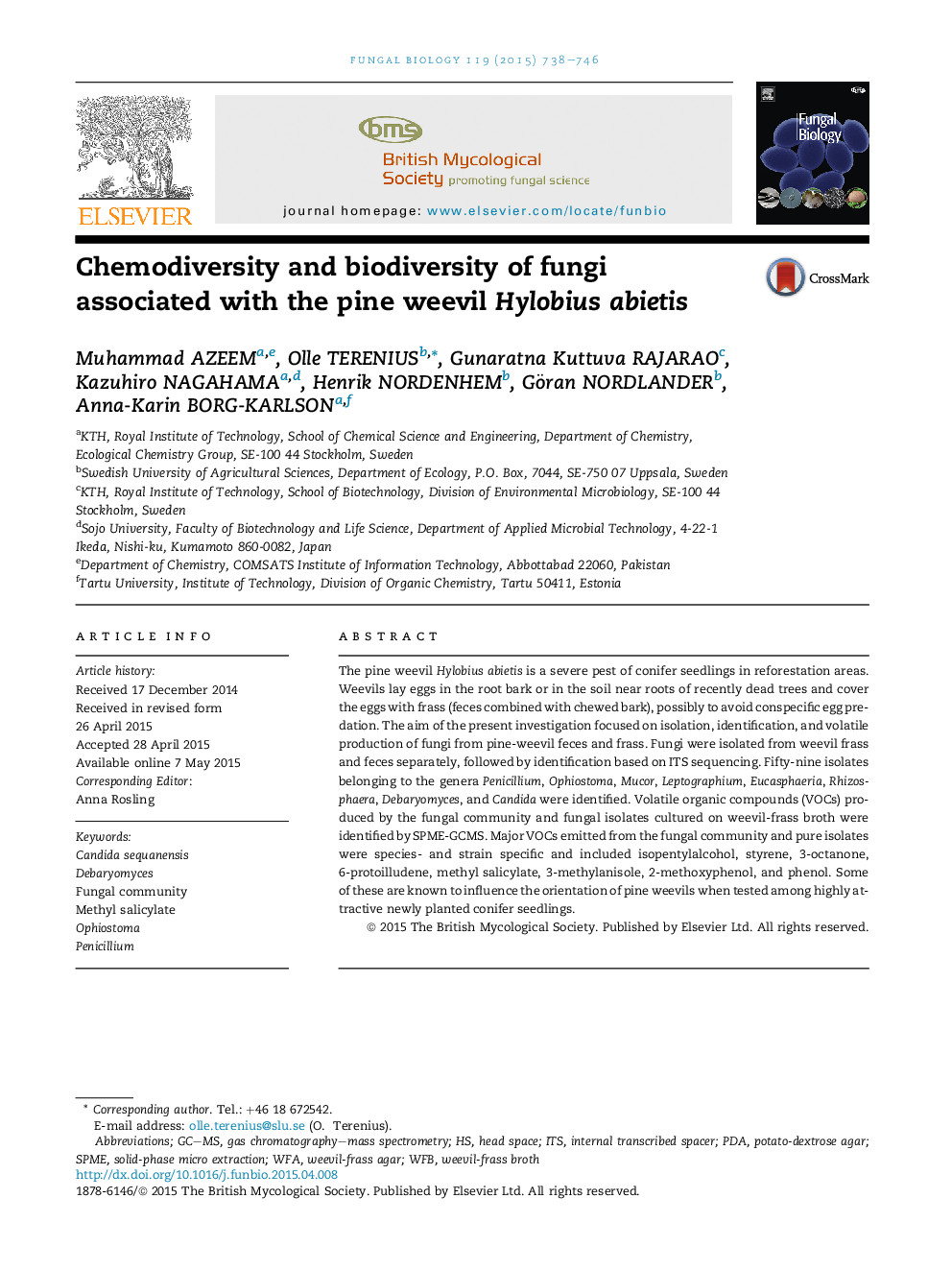| Article ID | Journal | Published Year | Pages | File Type |
|---|---|---|---|---|
| 4356876 | Fungal Biology | 2015 | 9 Pages |
•A number of fungi associated with pine weevil frass.•Chemical identification of fungal volatiles.•Fungi produce species-specific volatiles.
The pine weevil Hylobius abietis is a severe pest of conifer seedlings in reforestation areas. Weevils lay eggs in the root bark or in the soil near roots of recently dead trees and cover the eggs with frass (feces combined with chewed bark), possibly to avoid conspecific egg predation. The aim of the present investigation focused on isolation, identification, and volatile production of fungi from pine-weevil feces and frass. Fungi were isolated from weevil frass and feces separately, followed by identification based on ITS sequencing. Fifty-nine isolates belonging to the genera Penicillium, Ophiostoma, Mucor, Leptographium, Eucasphaeria, Rhizosphaera, Debaryomyces, and Candida were identified. Volatile organic compounds (VOCs) produced by the fungal community and fungal isolates cultured on weevil-frass broth were identified by SPME-GCMS. Major VOCs emitted from the fungal community and pure isolates were species- and strain specific and included isopentylalcohol, styrene, 3-octanone, 6-protoilludene, methyl salicylate, 3-methylanisole, 2-methoxyphenol, and phenol. Some of these are known to influence the orientation of pine weevils when tested among highly attractive newly planted conifer seedlings.
